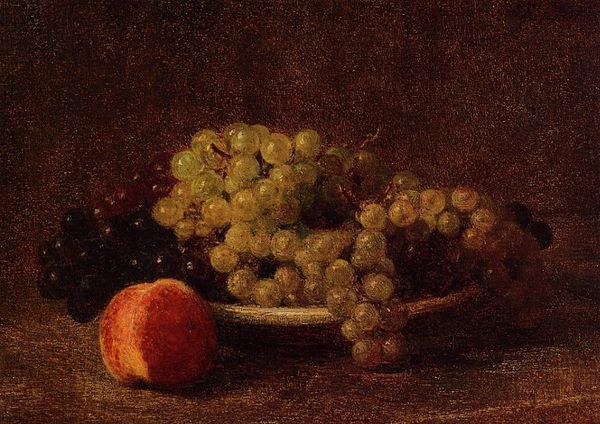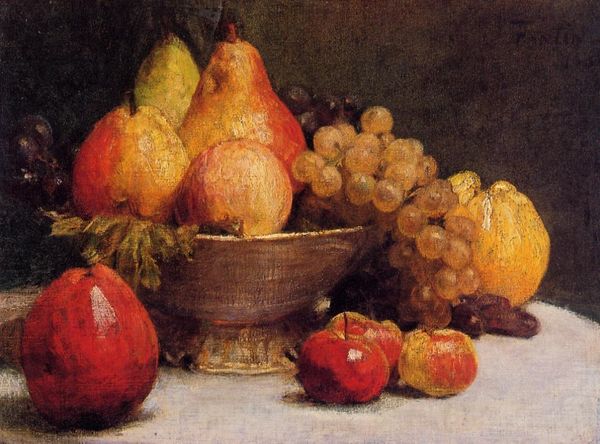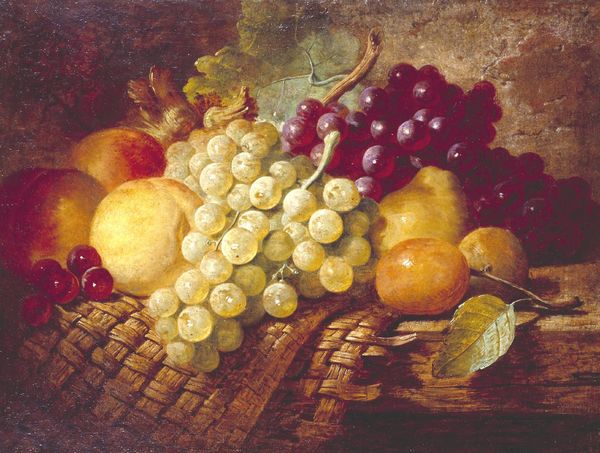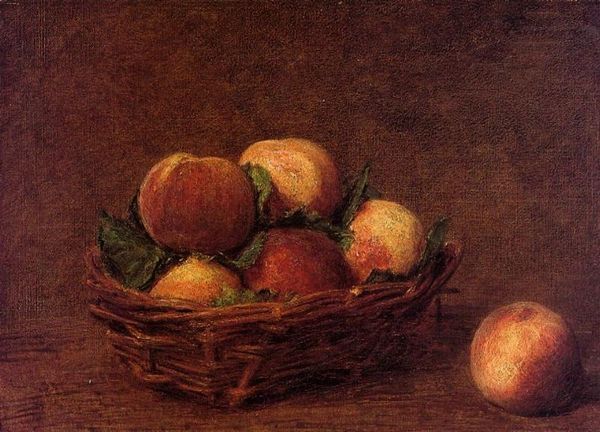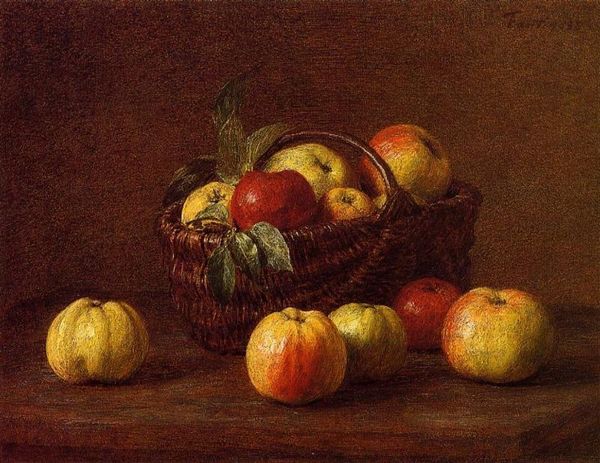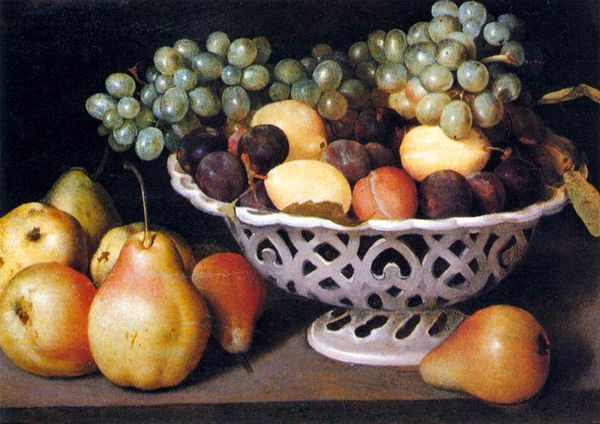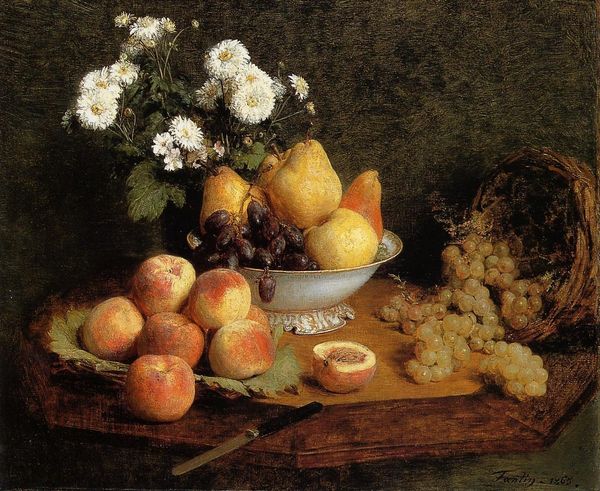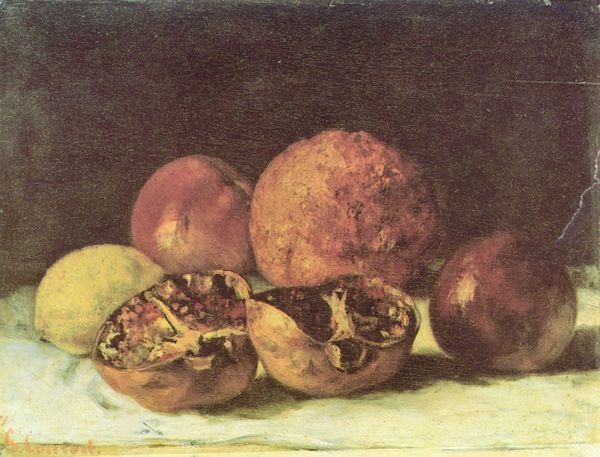
Copyright: Public domain
Editor: So, this is Henri Fantin-Latour’s "Basket of White Grapes and Peaches" from 1895. The oil paint has a real density to it, almost sculptural in the way it depicts the fruit. There's a subdued feel. What do you see in this piece, beyond a simple still life? Curator: I see a composition laden with socio-political subtexts relevant to its time. Think about what’s not depicted here: human labor. These fruits appear, clean and idealized, divorced from the exploitation inherent in agricultural production. Doesn’t it strike you as a deliberate obscuring of class dynamics? Editor: That’s a really interesting point. I hadn't considered the absence as a statement in itself. The Impressionists are often celebrated for capturing fleeting beauty, but... Curator: Precisely! Who is afforded the luxury to contemplate fleeting beauty? The rising bourgeoisie, right? Fantin-Latour positions his art within their orbit, offering them symbols of abundance and leisure, but carefully curated, sterilized. The basket, overflowing with produce, is an emblem of a consumer culture rapidly detaching from its messy realities. Editor: It's easy to overlook that layer when you just see it as… well, a basket of fruit. So the seemingly innocent portrayal is actually reinforcing certain power structures? Curator: Absolutely. Consider, too, the genre itself, the "still life," inherently domestic, coded as feminine. Fantin-Latour, though male, aligns himself with a feminized sphere of art production, perhaps both critiquing and capitalizing on its perceived marginality. How do you think that positions him? Editor: I’m starting to see the painting less as an objective snapshot and more as a carefully constructed commentary. It almost feels complicit, yet also perhaps subtly critical. Thank you; I would have missed all of that. Curator: It’s in grappling with those tensions that we understand not just art history, but also the present.
Comments
No comments
Be the first to comment and join the conversation on the ultimate creative platform.
